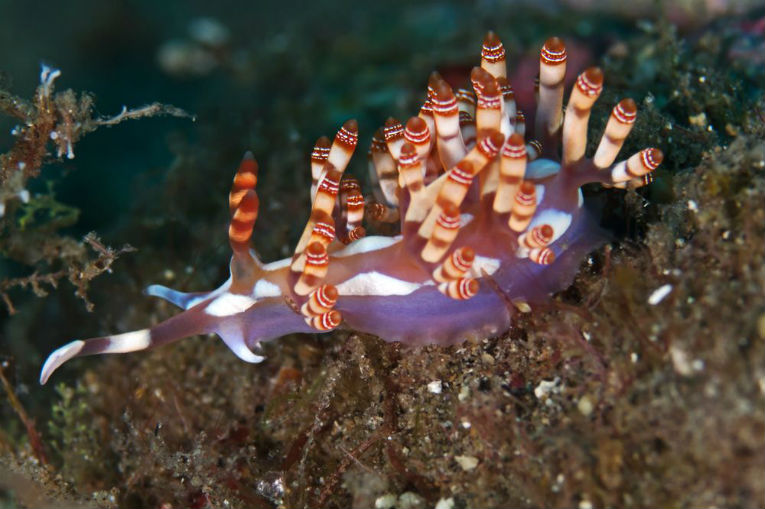The shaggy mouse is an interesting enough sea slug to many of us poking about in rock pools. If you study 560 of the known Aeolidids (about half the total) though, they are quite closely related. The present authors make it about 7 families of the nudibranch gastropods.. And they comprise some of the most beautiful, if a little small, animals alive. They feed on anemones in many cases, "adopting" their dinoflagellate photosynthesisers to provide extra food and nicking their stinging cells to protect their bodies. Beauty and cunning in the same animal!
The "feet" of 194 specimens were investigated for genetic analysis, with 32 other records used from Genbank. Many old specimens have sadly never been seen again, thanks to the lack of care we give our coastal species. New species are still found on glamorous Indonesia reefs to give added impetus to the continuous search for accuracy and valid naming that scientists need.
The Aeolidiidae are all in the same grouping, with one common ancestor, according to Leila Carmona, Marta Pola, Terrence M. Gosliner, and Juan Lucas Cervera, publishing in the journal, PLoS ONE. They hail from the Universidad de Cádiz, the Universidad Autà ³noma de Madrid and the California Academy of Sciences. The exception to all of this, "monophyletic," group of nudibranchs is that Pleurolidia is left out of the party.
It feeds on hydroids, like that of the Facelinidae with which it is now associated. The Facelinid speciality is preying on the soft octocorals. The shaggy mouse, Aeolidia papillosa has been found to have 3 very close species, although some other animals in the genus need investigation to see how close they are to A. papillosa. Even at the well-known end of the nudibranchs, such surprises wait for the unwary marine zoologist. Clearing up in this case just seems to open up a can of slugs!










